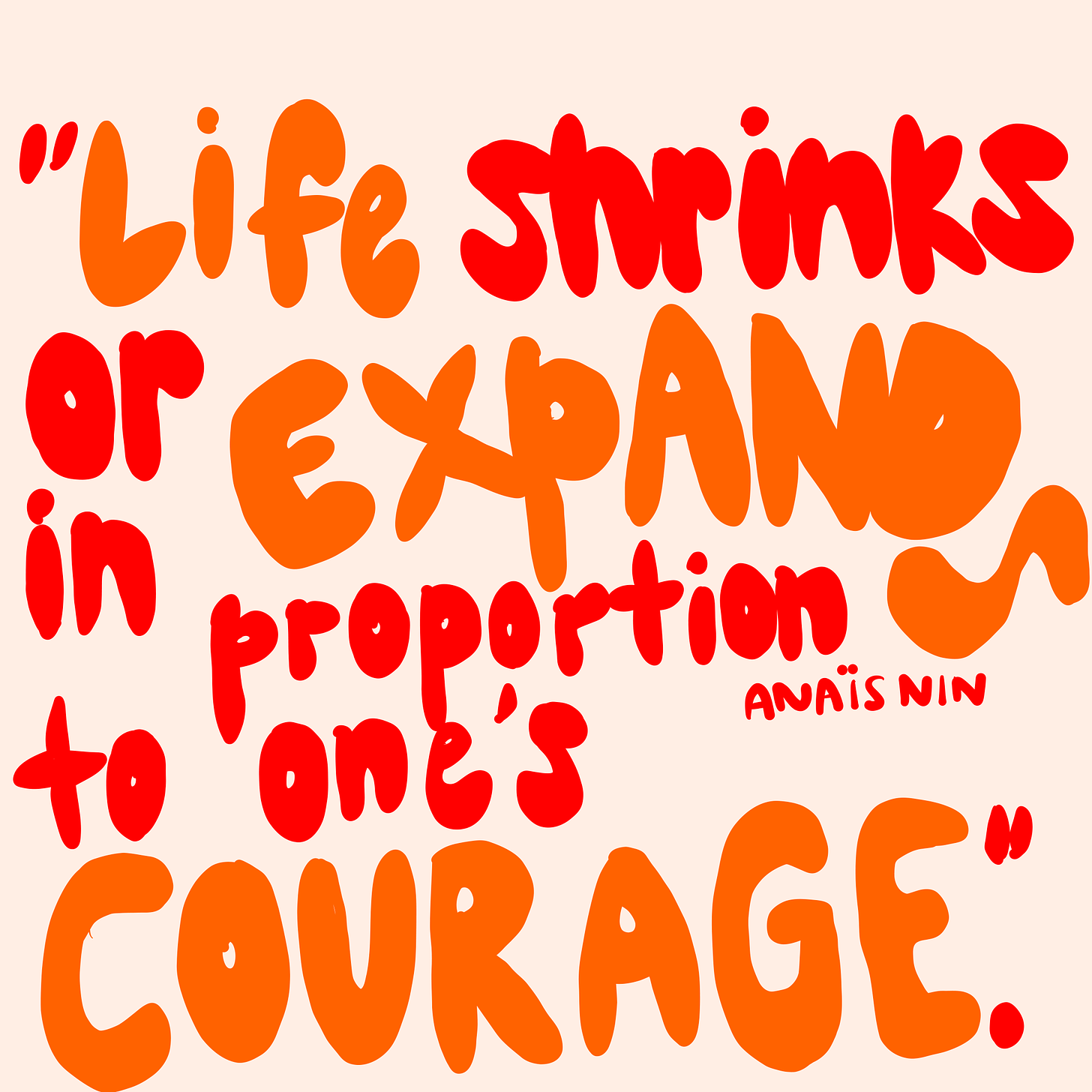Hello, creatives! Day 90 of #The100DayProject 🥳
When friend of the project Herbert Lui reached out about writing a guest post and giving away copies of his book (more below – keep reading!), I 1) said yes immediately, and 2) had already had this Anais Nin quote planned for today. I think it fits quite nicely.
Here’s Herbert:
In mid-February, I started one post every day at my blog. It was an awesome experience, and I plan to keep it going beyond #The100DayProject. (I also write about my experience writing note cards last year here!).
One of the best parts of writing so frequently is that I now see my writing not as an ending point – when I’ve completed and refined all my thinking – but instead as a starting point.
The daily blogging practice trains my brain to make more observations during the day; I’m no longer only seeing, I’m noticing. (The late Louis Vuitton menswear designer Virgil Abloh, who made an appearance on Day 71, has talked about how a repeated observation trains the brain.)
As this year’s #The100DayProject draws to a completion, I want to leave you with three questions in the hopes that you’ll consider how to take your practice beyond:
Do you see your creative operation as something you get to do, or something you have to do? Once you’ve narrowed in on your creative operation, getting started might feel like another task in your to-do list; maybe even a chore, on some days. But you can also cultivate the attitude not of “I need to do this,” but of “I get to do this.” If you don’t enjoy it, then you need to ask yourself what you’re doing and why. Is the goal something different from enjoyment, or passion? Are you driven to change your career path, or to learn a new skill for a different reason?
Do you need to loosen up, or do you need more structure? “Your creativity needs enough structure to support your freedom, but not so much that your freedom feels stifled,” Lindsay told me, when I interviewed her for Creative Doing. The ideal balance is different for everyone, and it also changes with time. Revisiting how loose, or structured, your practice is will support you in finding the constraints that work for you, right now. There’s a quote attributed to Professor Salvador Luria of the University of Illinois, who describes a research process combining the general with the specific, ideally a state of “controlled sloppiness, which states that it often pays to do somewhat untidy experiments, provided one is aware of the element of untidiness.”
What would you make, if you never showed anyone else? Whether it’s for your audience, or to meet an institution’s expectations, when you make something that you know you’ll be showing someone, you’re still adapting to someone else. One solution can be to start making things you know you won’t show anyone else. It’s only once you’ve gotten into the groove of this that you’ll make something truer to what you actually want to make, that enables you to find the stories you want to tell, that are worth taking risks for, and eventually to find your creative purpose.
These questions are variations of prompts that come from my book, Creative Doing. I wrote the book to support those of you who plan to continue your creative practice. Perhaps the completion of #The100DayProject is just a starting point for you – and you’ll keep going, until we hopefully meet again next year.
And the giveaway! Herbert and his publisher are giving away free digital copies of his book, Creative Doing, to the first 20 #The100DayProject community members who download it today.
If you’re not one of the lucky first 20, they were also nice enough to share a discount code with us: CD100DAY.
Thanks so much to Herbert, and thanks to all of you for your thoughtful submissions! Today is the last day to submit a quote to be featured on Day 100 of the project.




